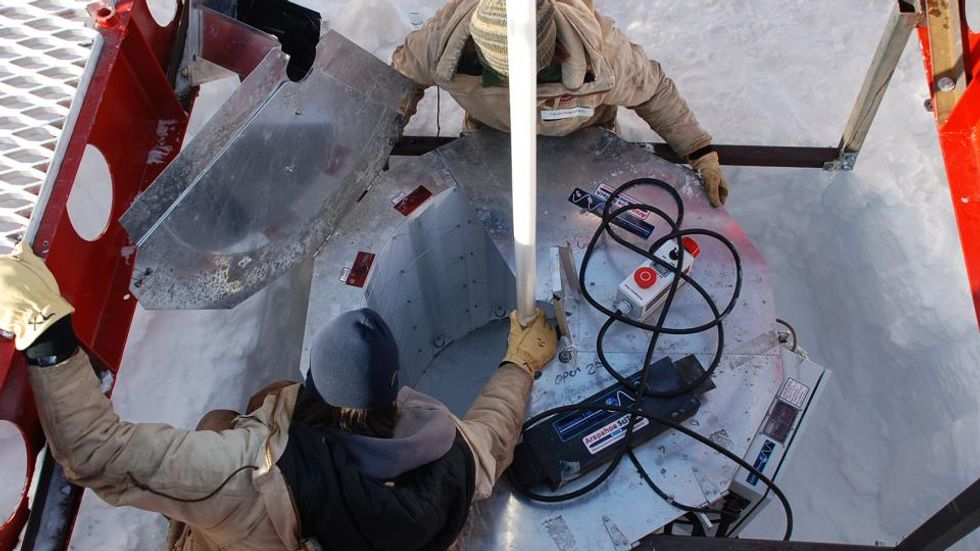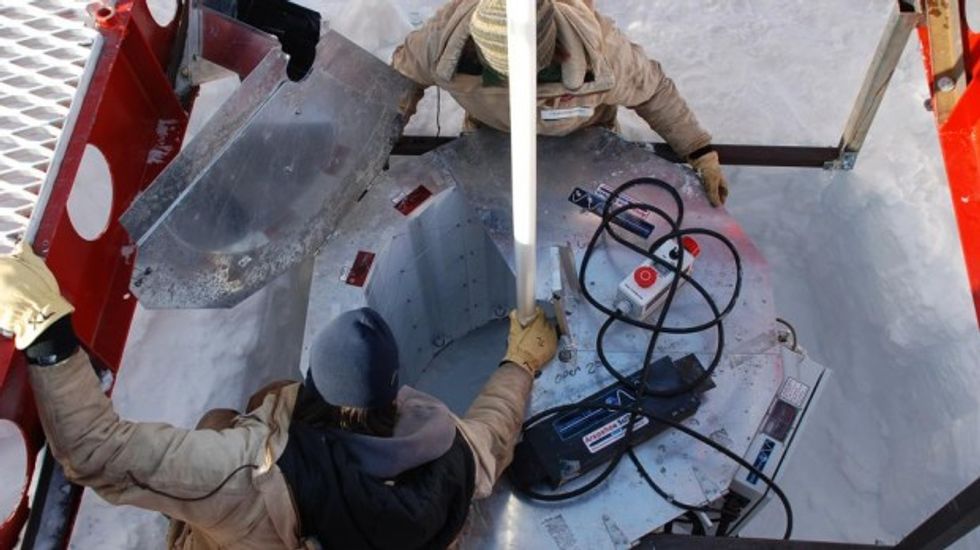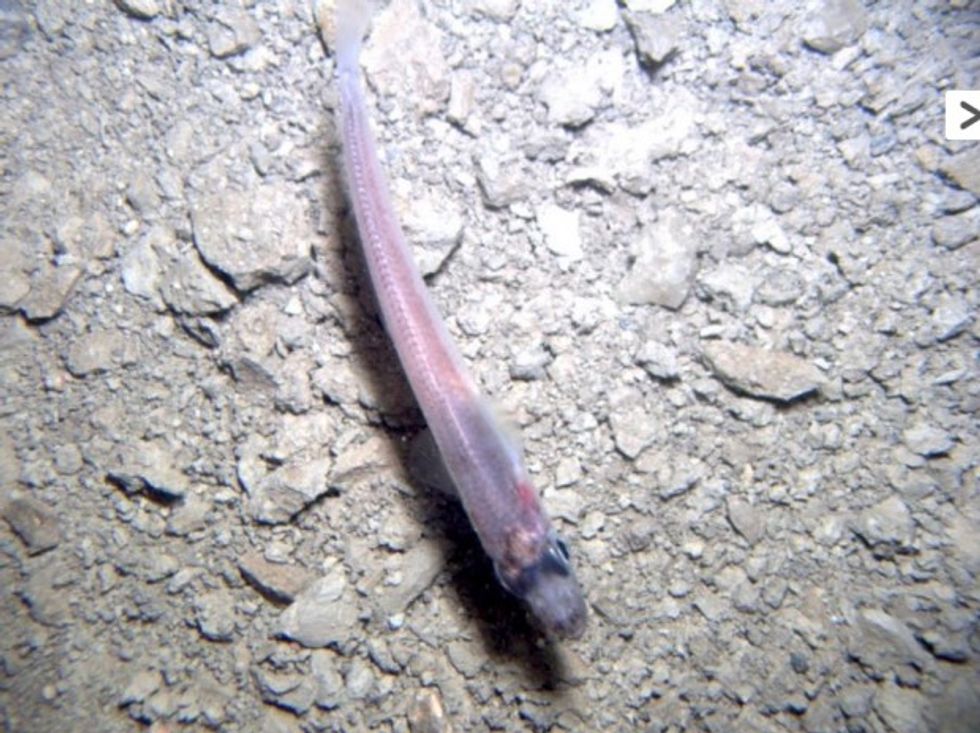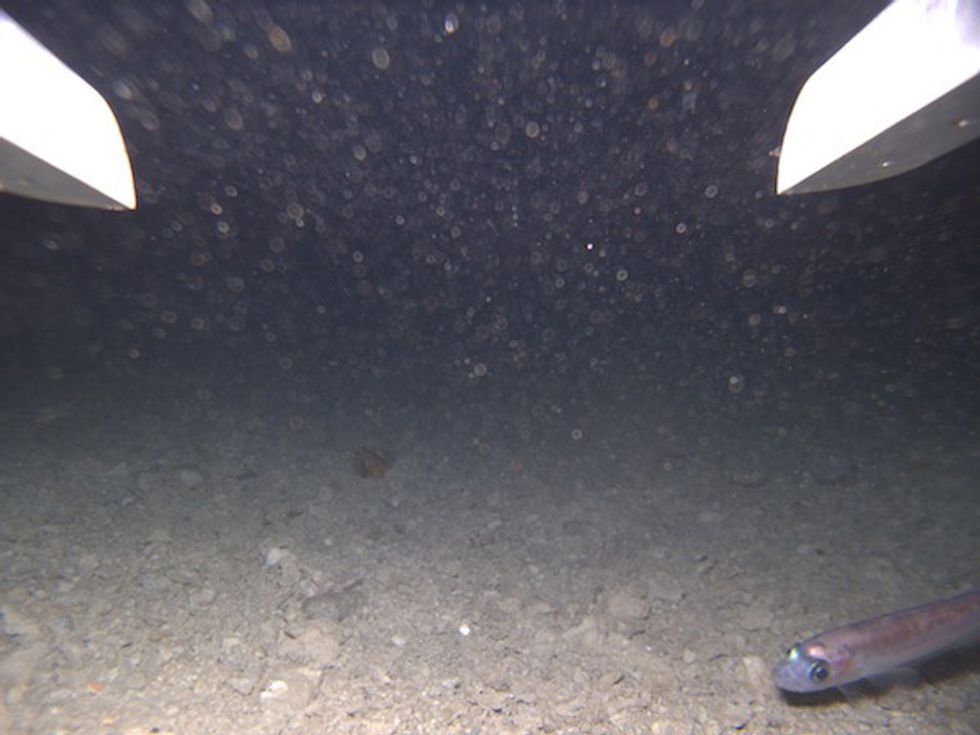
The WISSARD research team set up an ultraviolet light collar at the top of the bore hole in Antarctica. (University of Nebraska - Lincoln)

A team of scientists who used a specially designed hot-water drill to break through half-a-mile of Antarctic ice earlier this month discovered a "lost world" hidden beneath the Ross Ice Shelf.

Cameras that were carefully lowered Jan. 16 about 740 meters below the surface revealed an unsuspected ecosystem of fish and other life living beneath the ice sheet.
Experts say it's the furthest south that fish have ever been found.
"I have been investigating these types of environments for much of my career, and although I knew it would be difficult, I had been wanting to access this system for years because of its scientific importance," said Ross Powell, a chief scientist with the Whillans Ice Stream Subglacial Access Research Drilling (WISSARD) project and a researcher at Northern Illinois University.

"Findings such as these — gaining an understanding of the ice sheet dynamics and its interaction with ocean and sediment, as well as establishing the structure of its ecosystem — are especially rewarding," he added. "It's a big pay-off in delayed gratification."
[sharequote align="center"]"This is a tough place to live.”[/sharequote]
Brent Christner, a microbiologist at Louisiana State University, said it was remarkable that life could be found so far from the sun's reach.
"We have to ask what they're eating," he told the Scientific American. “Food is in short supply and any energy gained is hard-won. This is a tough place to live.”
Experts speculate that fish might be feeding on small plankton that would take years to make its way beneath the ice shelf.
Reflecting on the discovery, Powell told the Scientific American that was one of the chief things that astonished him about the finding.
"I'm surprised," he said. “You get the picture of these areas having very little food, being desolate, not supporting much life.”
Others agreed that the most surprising aspect of the find was how such an ecosystem could support life.
"Finding fish, or any other type of life, under an ice shelf is by itself not novel," said John Priscu, a WISSARD chief scientist and a professor of land resources and environmental sciences at Montana State University.

"However, our WISSARD data will establish for the first time sources of carbon and energy for higher trophic levels in this most southerly marine ecosystem. Our data will also provide important information on the connectivity between subglacial environments and ice-shelf productivity, allowing us to predict first responders to a warming climate," he added.
The expedition was funded by the National Science Foundation.
—
Follow Oliver Darcy (@oliverdarcy) on Twitter